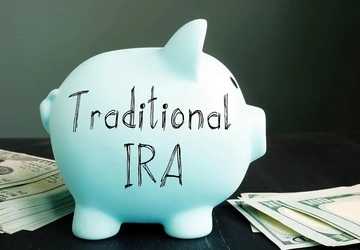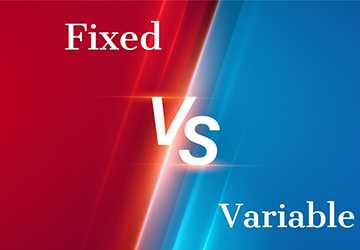5 Tax-Advantaged Accounts to Save $3,000 Annually in Taxes
Tax-advantaged accounts are critical to the reduction of your taxes and the provision of ways to save more.
You can use these accounts to your advantage, and you could save yourself thousands of dollars in taxes every year.
Imagine, from some intelligent decisions about where to save and invest your hard-earned dollars, you might come up with $3,000 more per year in your pocket. Now, that's the power of tax-advantaged accounts.
In this blog post, we'll get into five particular tax-advantaged accounts that can help you save a ton of taxes. You will understand how these accounts function and which one could optimize or make the best use of the accounts.
Knowing and making the best use of such accounts will put you firmly into the driver's seat for your financial future, allowing you to keep more of what you earn.
Let's get started!

Why Tax-Advantaged Accounts Are Beneficial?
Tax-advantaged accounts allow you to save money in many ways, significantly impacting your financial life.
These accounts help you cut down your taxes by reducing your taxable income, therefore keeping more money in your pocket each year.
Potential tax deductions are some of the significant pros of tax-advantaged accounts. By contributing to these accounts, you lower the amount of money subject to taxation, resulting in a smaller tax bill.
Another significant benefit is that it has the potential for tax-deferred growth.
Many tax-advantaged accounts allow your money to grow tax-free or tax-deferred. For example, you only pay taxes on investment gains once you take it out. Maximize these tax advantages for faster savings growth and a safer future.
Tax-advantaged accounts can help you drive value in your overall financial planning strategy.
If you are saving for retirement, healthcare, or being prudent about your future needs, tax-advantaged accounts are just an intelligent way of keeping more money working on your behalf.
5 Tax-Advantaged Accounts to Save $3,000 Annually in Taxes
Now that you have covered the general benefits of tax-advantaged accounts. Let's explore the five specific accounts that can help you save up to $3,000 in taxes each year.
1. Traditional IRA
A Traditional IRA can provide a great way to lower your taxable income as you save for retirement.
Contributions to a Traditional IRA account may be tax-deductible with your income and active participation in employer-sponsored plans. Contributions may be tax-deductible up to certain limits.
Earnings grow tax-deferred until withdrawal, potentially reducing taxable income significantly.
Investments in the Traditional IRA are tax-deferred and grow without reduction through taxes, thereby making your savings compound more precisely over time.
2. Roth IRA
A Roth Individual Retirement Account (IRA) offers a tax benefit different from any other retirement account.
Contributions are made in after-tax dollars, but your money grows tax-free and, in retirement, can be withdrawn tax-free.
Tax-free growth and tax-free withdrawals in retirement. No required minimum distribution (RMD) requirements. Contributions can be taken out anytime without penalties.
Unlike a traditional IRA, a Roth IRA has no lifetime RMDs, giving you control over the savings in your retirement. Plus, you can pull your contributions out at any time, penalty-free.
3. Health Savings Account (HSA)

An HSA is a triple tax-advantaged account designed for saving on medical expenses.
Contributions to an HSA are tax-deductible, the account accrues earnings tax-free, and withdrawals for qualified medical expenses are also tax-free.
Triple tax advantage: deductions going in, tax-free growth, and tax-free money coming out for medical expenses.
HSA balances carry over from year to year. It can be used for a variety of qualified medical expenses.
A distinctive feature of an HSA is that unused funds carry over annually, enabling you to accumulate a substantial balance for future health expenses.
4. 401(k) Plan
A 401(k) lets you save a part of your pay on a pre-tax basis, reducing your taxable income.
● Reduction in taxable income because of pre-tax contributions.
● Possibility of receiving employer matching contributions.
● Possible tax-deferred growth on earnings until you retire.
Most employers contribute to your 401(k) account. This can add up over the long term, boosting your retirement savings. It's free money, putting you closer to your financial goals.
5. 529 College Savings Plan
A 529 plan is a tax-advantaged account meant to assist with saving for educational expenses. Contributions increase in value tax-free, and withdrawals for qualified educational expenses are tax-exempt.
● Tax-free growth & withdrawals for qualified education expenses.
● Potential state tax deductions for contributions.
● Flexibility to change beneficiaries within the family.
Many states offer tax deductions or credits for contributions to these 529 plans, providing an additional incentive to save for education costs. Besides, you can change beneficiaries within the family when a need arises.
Start Saving on Taxes Today
Use the power of tax-advantaged accounts to reduce your tax bill substantially and realize gains more quickly.
These are opportunities to make sure more of your hard-earned money continues to work hard—start now and experience the financial benefits for yourself.
Many already use these strategies to save thousands of dollars in taxes yearly, so why not join them?
Please take action now and set off toward some actual tax savings and a road to long-term financial security. Your future self will thank you.
Frequently Asked Questions
Q: What are the contribution limits for these tax-advantaged accounts?
A: Contribution limits depend on the type of account and may change annually. For 2023: IRA's: * Traditional and Roth IRA: $6,500 ($7,500 if 50+) HSA: * $3,850 individual * $7,750 family 401(k): * $22,500 ($30,000 if 50+).
Q: Can I have multiple tax-advantaged accounts at the same time?
A: Yes, you can contribute to several tax-favored accounts at once. Do so with some care on limits and eligibility requirements on the features, however, to maximize tax savings and avoid penalties.
Q: How do I choose the best tax-advantaged account for my needs?
A: Think of your financial goals and your current position in terms of taxation, but also how you project the future. Your age, your income, whether you are retired, or if you have some health needs are necessary. You should consult a financial consultant for a decision on your specific case.





